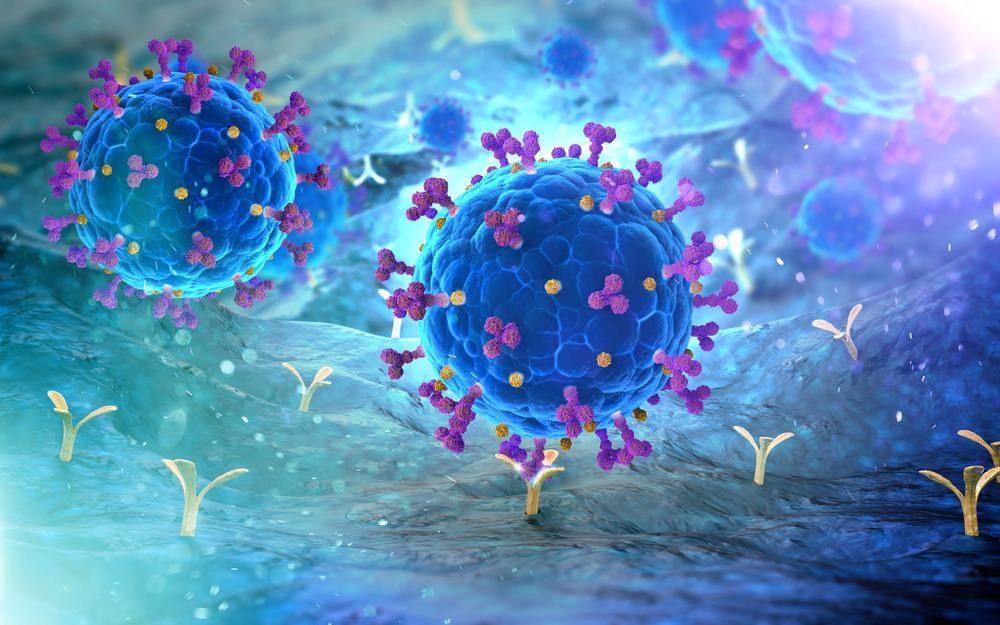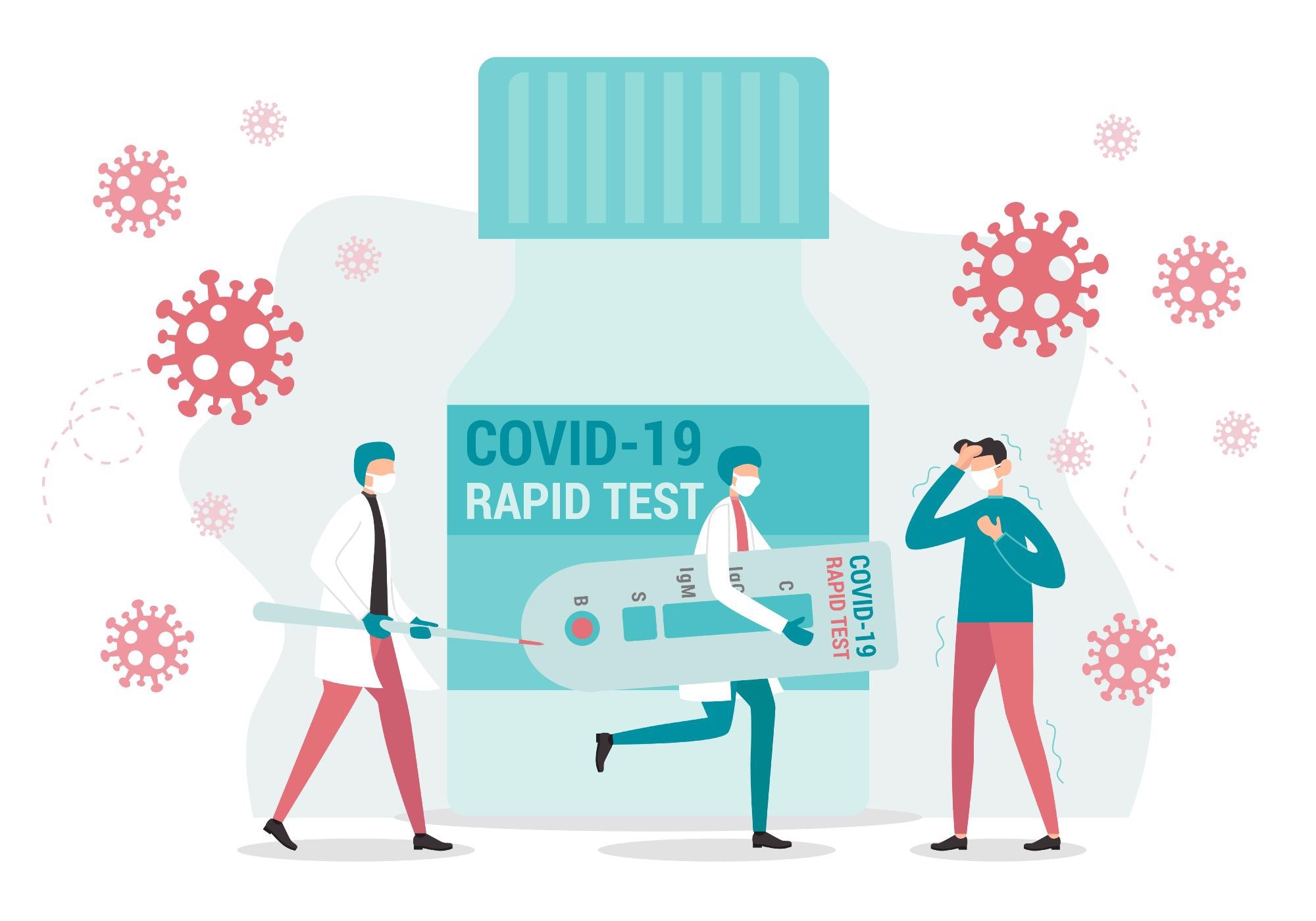In the past, many notable scientific discoveries have occurred while going through challenging situations. Similarly, the ongoing coronavirus disease 2019 (COVID-19) pandemic has significantly triggered a shift in many facets of our lives and has impacted the life science industry.

Image Credit: Andrii Vodolazhskyi/Shutterstock.com
For instance, in response to this pandemic, scientists have developed highly effective novel vaccine platforms and innovative infrastructures for large-scale, high-throughput testing. This article discusses the evolution of the life science industry amidst the COVID-19 pandemic.
In response to the COVID-19 pandemic, caused by the rapid outbreak of a novel coronavirus, namely, severe acute respiratory syndrome coronavirus-2 (SARS-CoV-2), scientists and policymakers across the world have developed many pharmaceutical (vaccines and therapeutics) and non-pharmaceutical (facemasks, sanitizers, national lockdowns, and travel restrictions) means to contain the pandemic.
Evolution of the Life Science Industry through the COVID-19 Pandemic
The life science sector covers various companies, including medical devices, pharma, research tools, and scientific reagents. The COVID-19 pandemic has had a massive impact on medical technology, health technology, and drug development. Interestingly, according to a recent report, only 0.1% of life science companies are critically affected, and 0.2% are severely affected by COVID-19. This is significantly low compared to other industries. Rapid development has been observed in the life science sector in the past quarter. Unsurprisingly, one of the foremost fronts has been the development of COVID-19 vaccines.
Researchers have worked at an unprecedented speed to develop effective COVID-19 vaccines and therapeutics to contain the pandemic. Additionally, they developed monoclonal antibodies rapidly for the treatment of severely infected COVID-19 patients. The practice of drug repurposing has also significantly advanced during the pandemic.
The current pandemic has encouraged collaborations among companies; for instance, companies associated with developing and manufacturing the lipid nanoparticles have been supporting global mRNA manufacturers to enhance the speed of vaccine development. These collaborations reduced the crisis of vaccine shortage due to the lack of raw materials. Some of the common areas where tremendous innovations have occurred during the pandemic are discussed below.
Vaccine Development
Historically, it takes a decade on average to develop vaccines. In this pandemic, scientists have developed several vaccines at record speed. Subsequently, the rapid rollout has saved millions of people from severe infection. In late 1987, Robert Malone, a graduate student at the Salk Institute for Biological Studies in La Jolla, performed a landmark experiment that indicated the use of mRNA in medicine.
For many years, scientists have worked extensively to find ways to deliver mRNA into the body. During this pandemic, an mRNA-based vaccine was developed for the first time, where the chemically modified RNA was delivered into the host cells using liposomes. To date, millions of individuals worldwide have been protected from COVID-19 infection via mRNA-based immunization.
Face masks and Personal protective equipment (PPE)
As wearing face masks and PPE was determined to be effective in protecting an individual from COVID-19 infection, many improvements have been made in these products. For instance, nanocoated facemasks that can neutralize virus particles have been designed. Also, smart textile products have been utilized to manufacture PPE with thermal stability, which has immensely helped healthcare personnel who have to wear them for long hours.
Ventilators
The shortage of ventilators was a huge crisis during the first wave of the pandemic. Countries such as South Korea and Germany were able to scale up the ventilators manufacturing rapidly. Researchers at the Imperial College London have developed low-cost ventilators that meet international standards for critical care ventilators. This implies that the newly designed ventilators are effective for COVID-19 patients and other respiratory diseases, such as tuberculosis and influenza, which result in millions of deaths every year. This ventilator contains four on-off solenoid valves, an oxygen sensor, a two-liter reservoir, and two mechanical pressure sensors.
Unlike other ventilators, it does not require pressurized gas supplies, which is a major component in short supply. Multiple companies have collaborated to address the shortages of ventilators during the pandemic. For instance, Johnson & Johnson has collaborated with Prisma Health to manufacture and distribute ventilator parts free of cost to healthcare providers.
Diagnostic Kit
Developing rapid and reliable diagnostic kits for SARS-CoV-2 infection has played a crucial role in this pandemic. Early detection of COVID-19 infection could isolate an infected person from uninfected individuals, significantly reducing further transmission of the virus. Scientists have developed a point-of-care or home-based COVID-19 test kit, which has enabled easy mass screening for the infection. Additionally, the development of an antibody test kit helped confirm if an individual has recovered from COVID-19 infection or not.
Many manufacturers have rapidly developed diagnostic kits and made substantial profits. For instance, Abbott Laboratories has eight COVID-19 test kits that the Food and Drug Administration approves. These kits are based on molecular antigen diagnostics as well as serology.

Image Credit: HeyGari/Shutterstock.com
Digital Technologies
Digital applications have progressed rapidly in this pandemic, especially telemedicine, which was heavily used for virtual healthcare practices. Although telemedicine is not a new discovery, it was highly underused. The COVID-19 symptom tracker app developed by Kings College London and the one designed by Zoe had been used by almost 2.7 million users by the end of April 2020. These applications helped scientists assess the virus transmission rate and the most affected areas.
Pando is another app that allows doctors to swap notes on managing the outbreak. Rapid evolution in digital technology has enabled a continual sharing of information that has improved patient care in the long run.
Start-up Companies
Interestingly, many life sciences start-up companies, e.g., Immunocore, have experienced a surge in demand, and they have been creating job opportunities. Some companies like Randox were involved in developing clinical diagnostics for diseases, such as cancer and Alzheimer’s, and partnered with the government to develop a new coronavirus testing program.
Last Updated: May 11, 2022